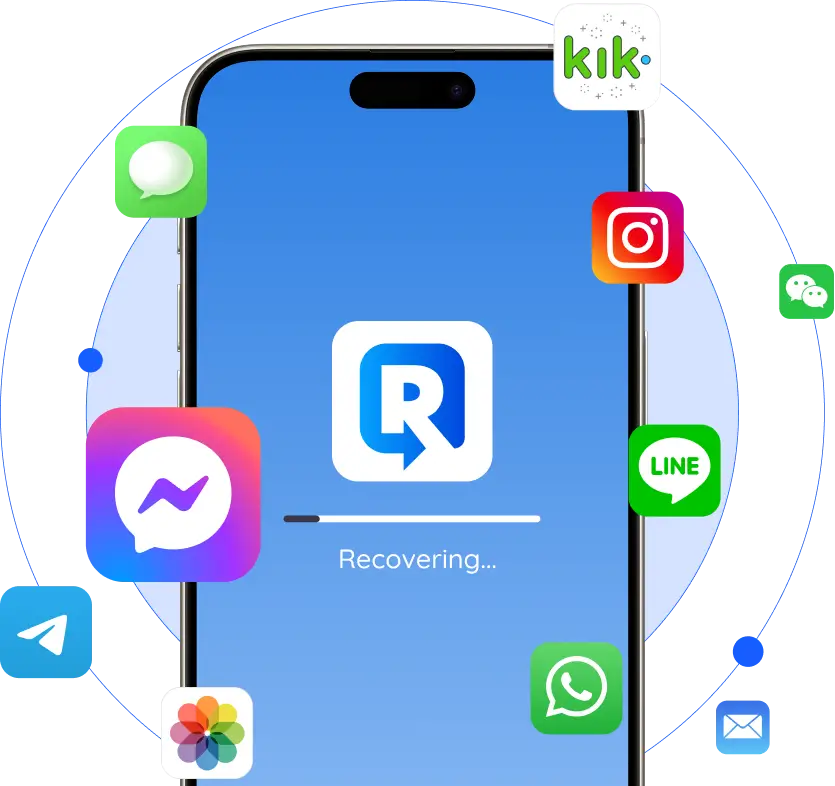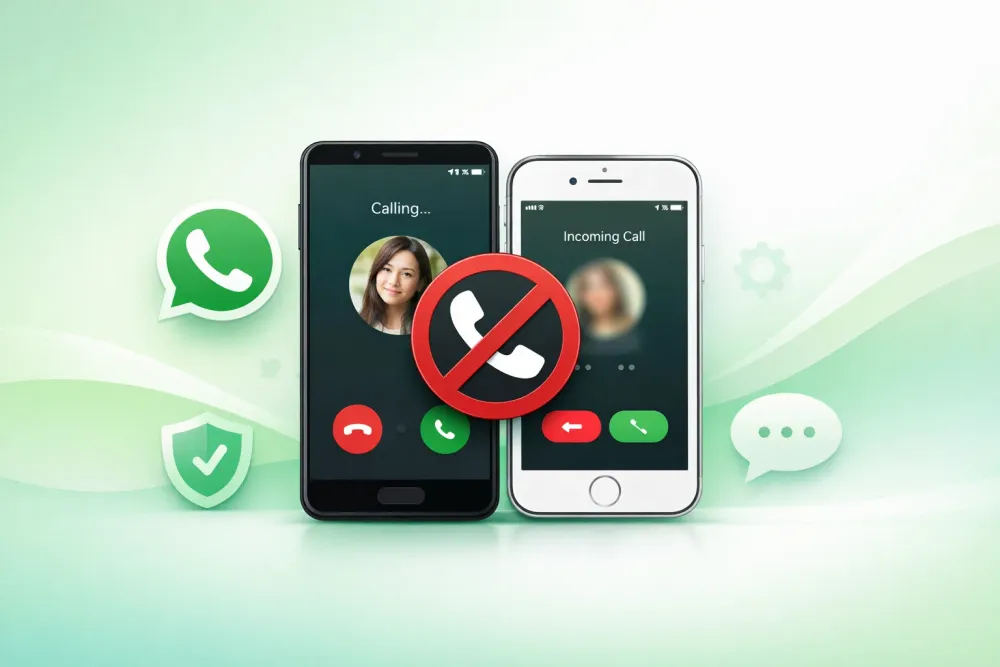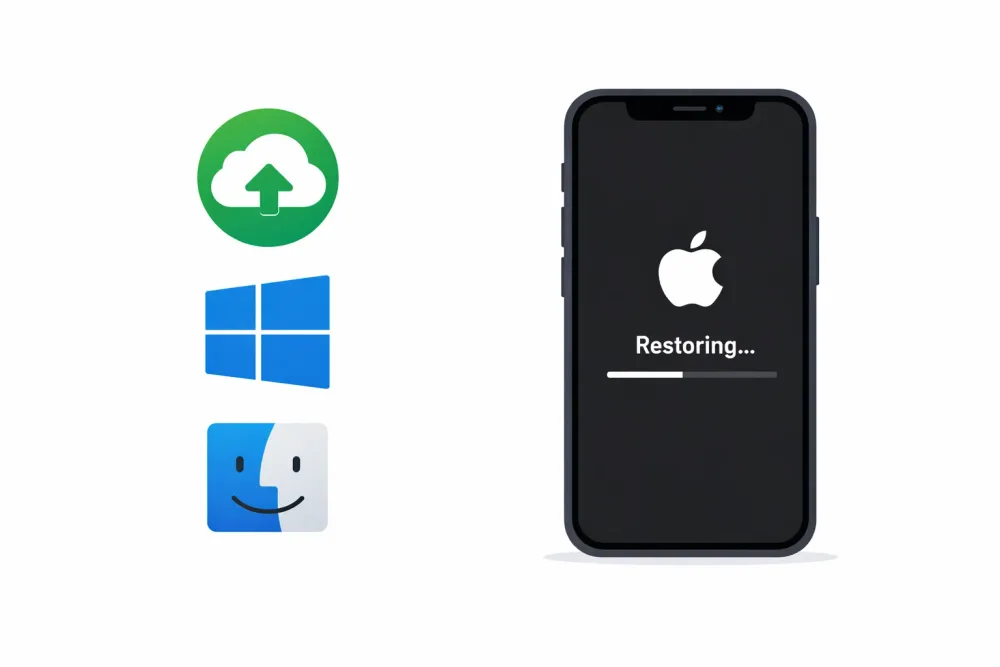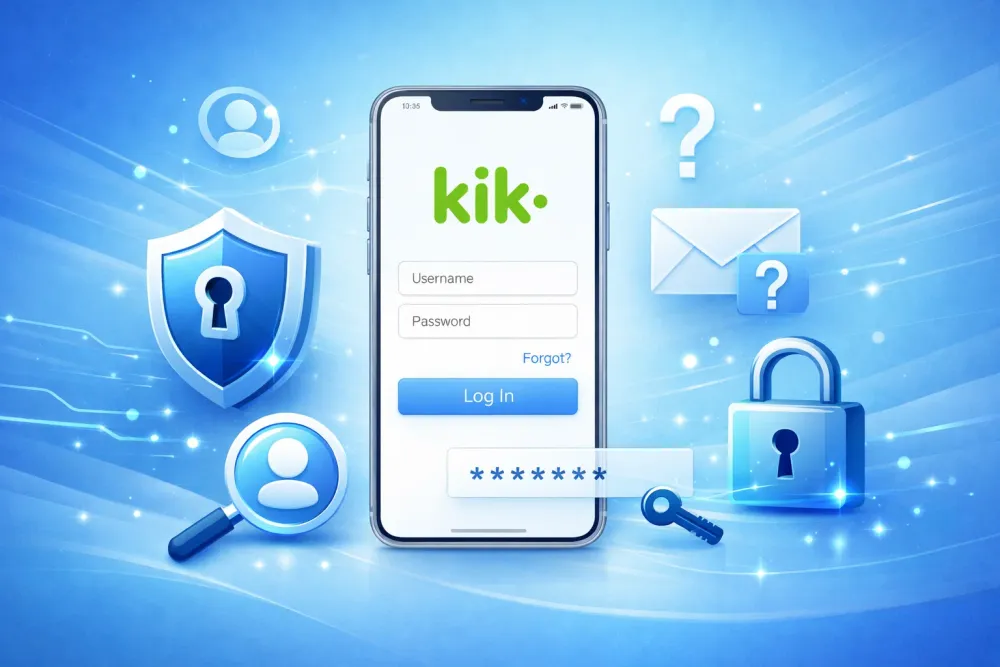Apple's iOS 18 brought a wave of exciting features to iPhone users worldwide—from enhanced AI capabilities to redesigned interfaces. However, alongside these improvements, numerous users have reported unexpected data loss after updating their devices. If you've recently updated to iOS 18 and discovered missing photos, contacts, messages, or other critical data, you're not alone.
This comprehensive guide walks you through everything you need to know about iOS 18 data loss, why it happens, and most importantly, how to recover your precious memories and data.
Why Does Data Loss Happen After iOS 18 Updates?
Jailbreaking iOS 18 or making unauthorized system changes significantly increases data loss risk during updates. iOS 18 updates can sometimes cause missing photos, messages, or app data, even on stock devices. Below are the main reasons — and what they mean for your recovery chances.
1. Interrupted Update
If the update stops midway due to low battery, unstable Wi-Fi, or a forced restart, system files may corrupt — leaving some data unreadable or missing.
2. Software Bugs or App Conflicts
Early iOS 18 builds can contain bugs or incompatible apps that break data links or cause sync errors, especially in iCloud-connected apps.
3. Not Enough Storage
When your iPhone runs low on space during installation, iOS may delete cached data or overwrite existing files to complete the update, leading to permanent loss.
4. Failed Data Migration
iOS 18 changes how files and app data are stored. If migration fails, you may lose file paths, database links, or encrypted data that can’t be reconnected.
5. iCloud Sync Errors
If iCloud sync is active while updating, sync conflicts or disabled settings can remove files from both device and cloud — making recovery harder.
✅ Tip: Before future updates, back up to iCloud and a computer, keep 10GB+ free space, and avoid interrupting the update process.
What Types of Data Are Most Commonly Lost?
Not all data is equally vulnerable during iOS updates. Here's what users most frequently report losing after updating to iOS 18:
Data Type | Loss Frequency | Recovery Difficulty |
Photos & Videos | ⭐⭐⭐⭐⭐ Very Common | Moderate |
Messages (SMS/iMessage) | ⭐⭐⭐⭐ Common | Easy to Moderate |
Contacts | ⭐⭐⭐⭐ Common | Easy |
App Data & Settings | ⭐⭐⭐ Moderate | Moderate to Difficult |
Notes | ⭐⭐⭐ Moderate | Easy |
Safari History/Bookmarks | ⭐⭐ Less Common | Easy |
Health & Fitness Data | ⭐⭐ Less Common | Difficult |
Calendar Events | ⭐⭐ Less Common | Easy |
Why Photos and Videos Are Most Affected
Media files are particularly vulnerable because:
They consume the most storage space
They undergo compression and format conversion during updates
They're often stored in multiple locations (device, iCloud, app caches)
Their large size makes them more susceptible to incomplete transfers
⚠️ Before You Panic: Is Your Data Really Lost?
Sometimes iOS 18 only hides your data rather than deleting it. Quickly check these areas:
iCloud Photos: Ensure that “Sync this iPhone” is turned on.
Hidden & Recently Deleted Albums: Look for missing photos.
iPhone Storage: Check if unexpected “Other” or “System” usage indicates data is present but hidden.
If your files still don’t appear, it’s time to move on to recovery solutions.
How to Recover Lost iPhone Data After iOS 18 Update
Updating to iOS 18 can sometimes lead to unexpected data loss. Whether it’s photos, messages, or app data, losing important files can be stressful. Fortunately, there are reliable ways to get your data back. The best approach depends on whether you have backups, want selective recovery, or prefer professional tools. Let’s explore the most effective methods step by step.
Method 1: Restore Lost Data from iCloud Backup
If you regularly use iCloud to back up your iPhone, restoring from a backup is the most straightforward solution. This method retrieves your photos, messages, app data, and settings exactly as they were at the time of the backup.
⚠️ Warning: This process erases all current data on your device, so make sure anything new is backed up first.
Steps to Restore from iCloud Backup
Step 1. Verify Your Backup
Go to Settings → [Your Name] → iCloud → Manage Storage → Backups, then select your device to check the date and size of your latest backup. Make sure it was created before the iOS 18 update, and confirm the data types included under Choose Data to Back Up.
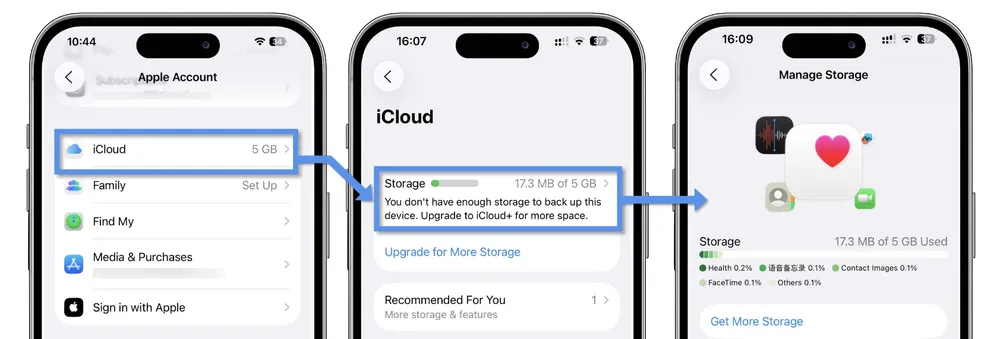
Step 2. Prepare Your Device
Keep your iPhone charged or plugged in and connect to a stable Wi-Fi network. Remember that any data created after the backup date won’t be recovered, so save anything important first.
Step 3. Erase All Content
Go to Settings → General → Transfer or Reset iPhone, then tap Erase All Content and Settings to reset your device before restoring.
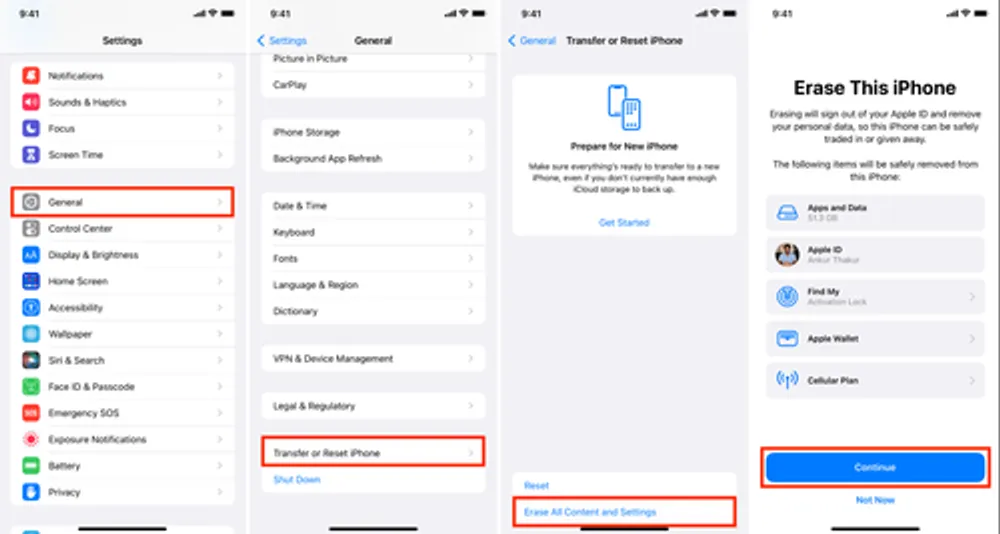
Step 4. Restore from iCloud Backup
During setup, choose Restore from iCloud Backup, sign in with your Apple ID, and select the most recent backup. The process may take 30 minutes to a few hours, depending on your Wi-Fi speed and backup size.
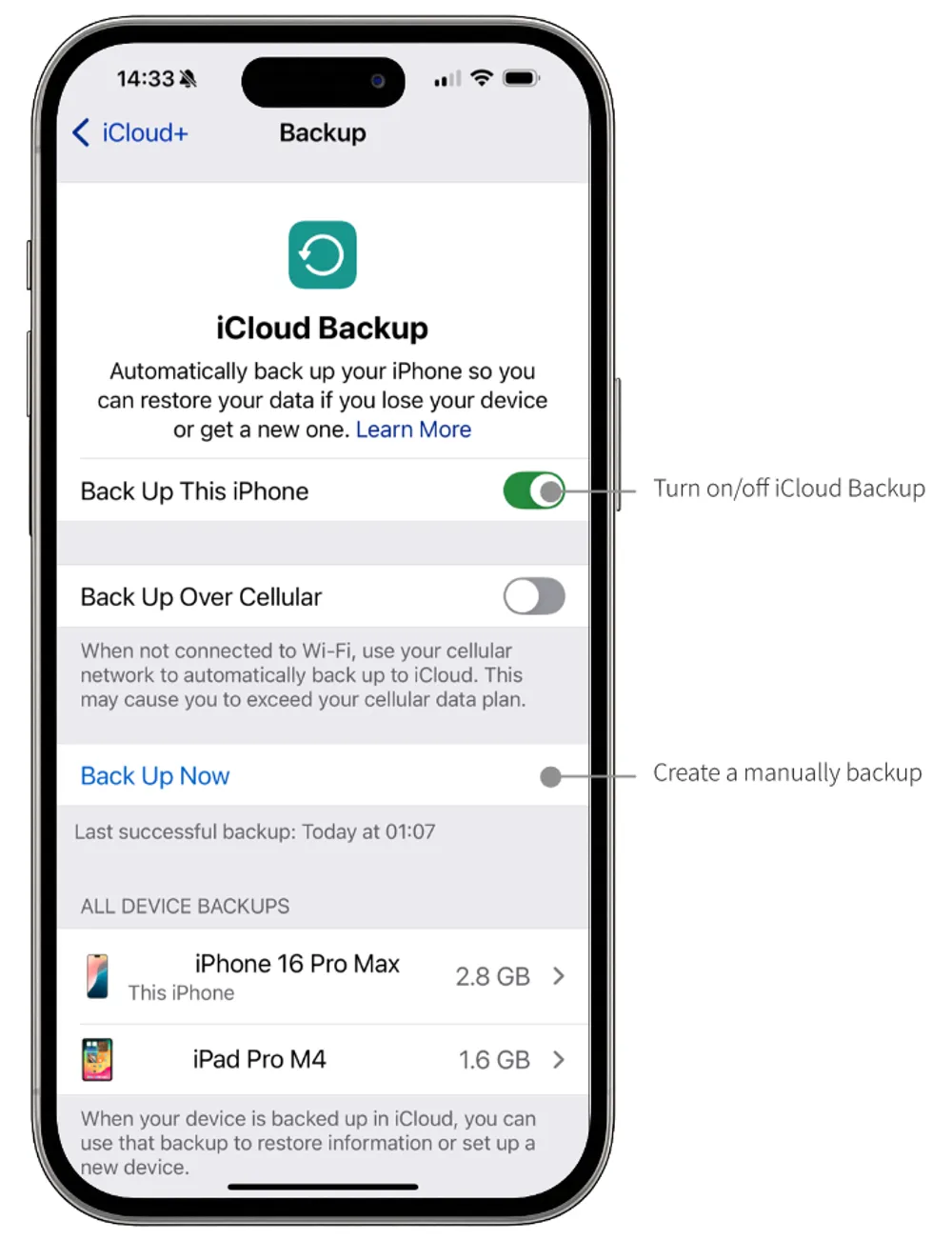
Step 5. Verify Restored Data After your iPhone restarts, open Photos, Messages, and Contacts to confirm your data has returned. Check key apps and Settings to ensure everything works as expected.
Pros:
✅ Comprehensive recovery of all backed-up data
✅ Official Apple method with high success rate
✅ No third-party software required
Cons:
❌ Loses all data created after backup date
❌ Time-consuming process
❌ Requires stable internet connection
❌ Can't selectively restore specific data types
Best for: Fully restoring your iPhone to recover all lost data from a recent backup.
Method 2: Restore Lost Data from iTunes/Finder Backup
Best for: Users with recent computer backups; faster than iCloud
Advantages over iCloud: Faster restoration, works without internet, includes more data types
Step-by-Step Process:
For Mac (macOS Catalina or Later)
Step 1. Connect and Trust Your Device
Use the original Lightning cable to connect your iPhone to your Mac. When prompted on your iPhone, tap “Trust” and enter your passcode. Then open Finder on your Mac and select your iPhone from the sidebar to continue.
Step 2. Locate Your Backups
In Finder, open the General tab and click Manage Backups. A list of available backups will appear — review the dates and sizes carefully, then select the most recent one made before the iOS 18 update.
Step 3. Restore from Backup
Click Restore Backup and enter your password if the backup is encrypted. Keep your iPhone connected during the entire process — restoration can take anywhere from 15 to 45 minutes depending on the backup size. Once your device restarts, wait for all apps and data to finish syncing, then check to confirm that your photos, messages, and settings have been successfully restored.
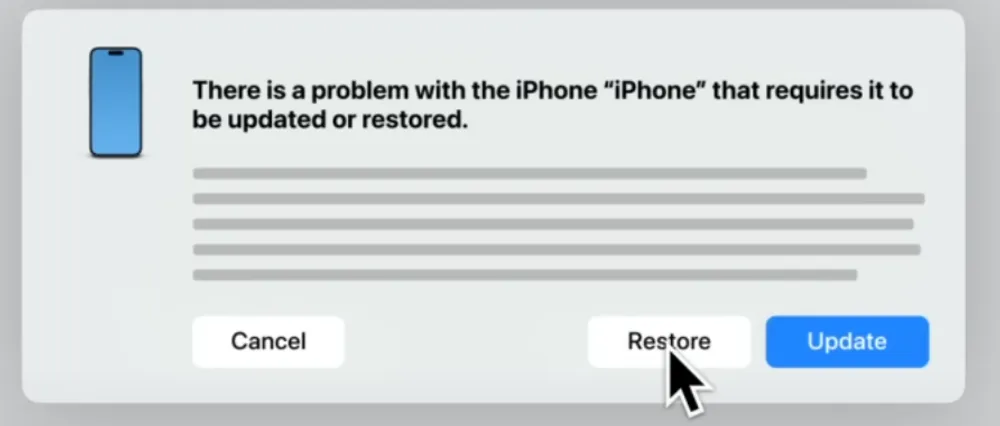
For Windows or macOS (Pre-Catalina)
Step 1. Open iTunes and Connect Your iPhone
Launch iTunes on your computer and make sure it’s updated to the latest version. Connect your iPhone using a USB cable, then click the device icon at the top left corner once it appears.
Step 2. Access Backup Options
In the sidebar, select Summary, then scroll to the Backups section. Click Restore Backup to view your available backup files.
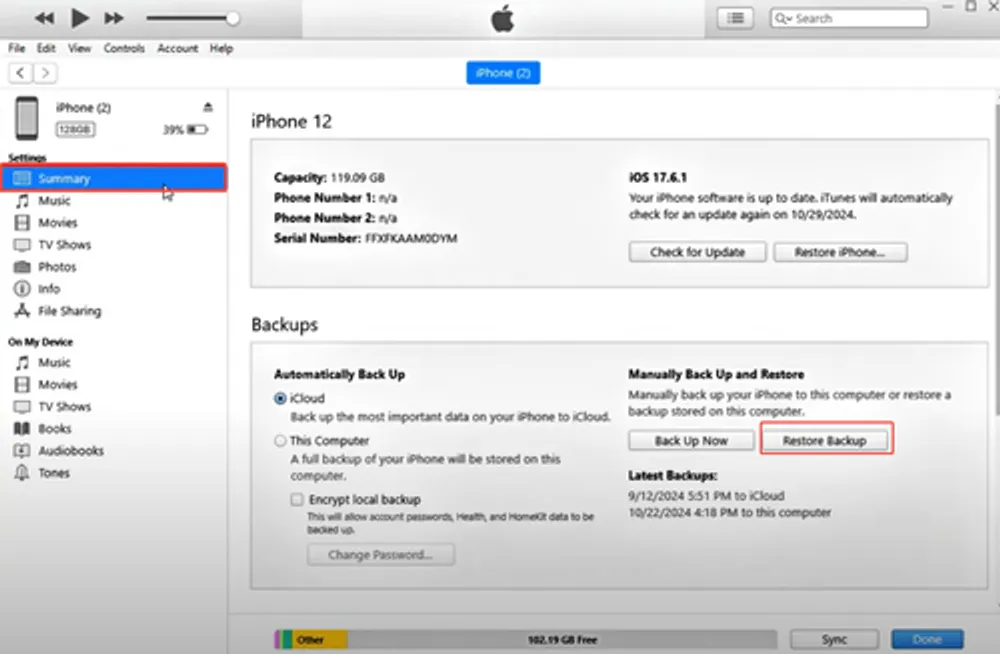
Step 3. Complete the Restoration
Choose the backup you want to restore by checking its date and size, then click Restore. If the backup is encrypted, enter your password to proceed. Keep your iPhone connected during the process — once the restoration and restart are complete, wait a few minutes for all your data to fully sync.
Pros:
✅ Faster than iCloud restoration
✅ Works offline after initial connection
✅ Includes app data that iCloud might not
✅ Complete device snapshot
Cons:
❌ Requires computer with previous backup
❌ Erases current device content
❌ Can't preview backup contents before restoring
❌ Backup may be outdated if not performed regularly
Method 3: Restore Lost Data Using Third-Party Data Recovery Software
When built-in methods don’t bring your data back, professional tools can often do what Apple’s recovery options can’t. Gbyte Recovery is a trusted iPhone recovery solution that scans your device or iCloud account for lost files—without the need for a full device reset. It’s ideal when you need to retrieve only specific photos, messages, or app data safely.
Why Choose Gbyte Recovery
Effortless to Use: A clean, intuitive interface designed for everyone—no tech skills required.
Fully Compatible with iOS 18: Optimized for the latest iOS updates with ongoing software support.
Safe & Non-Destructive: Recovers lost data without overwriting your current files or settings.
Comprehensive File Recovery: Supports photos, videos, messages, contacts, and even app data.
Free Scan & Preview: Identify recoverable files before committing to restore.
Flexible Recovery Options: Works with or without a prior iTunes/iCloud backup.
Whether your data vanished after an update or wasn’t backed up at all, Gbyte Recovery offers a secure, straightforward way to get it back—fast.
How Gbyte Recovery Works:
Download and install Gbyte Recovery on your PC or run it on your iPhone directly
Select data types you want to recover (photos, messages, contacts, etc.)

Start the FREE scanning process and wait for completion

Preview all recoverable files with thumbnails and details and select specific files or all items to recover
Click "Recover to PC" and choose save location on your computer
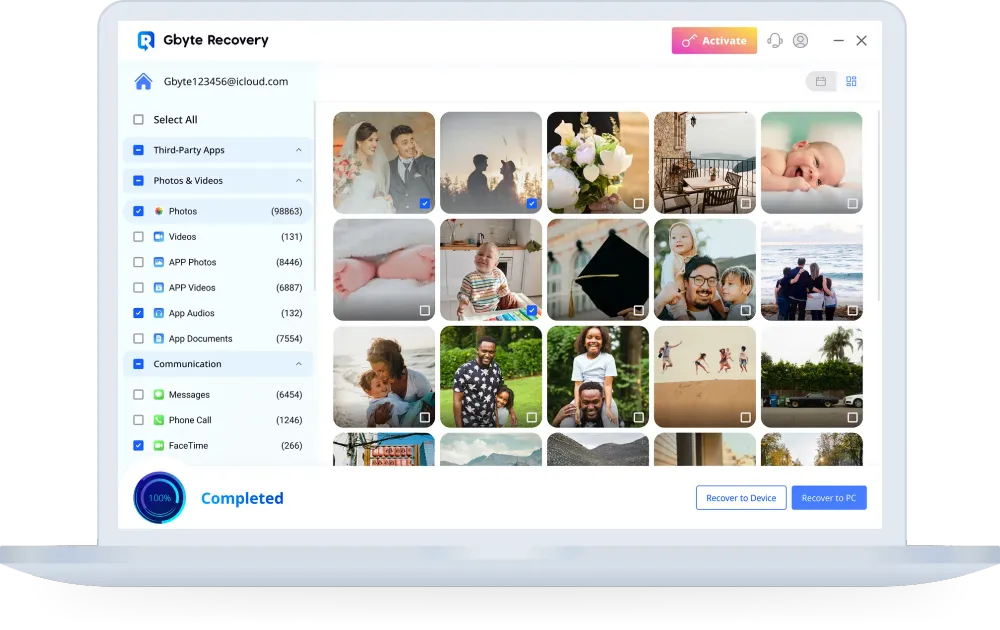
What Makes Gbyte Recovery Stand Out:
No Data Overwriting: Recovery process is read-only, ensuring existing data remains intact
Selective Recovery: Choose exactly which files to recover instead of restoring everything
High Success Rate: Advanced algorithms specifically tuned for iOS 18 file systems
Regular Updates: Frequent software updates to address new iOS 18 issues
24/7 Support: Responsive customer service team to assist with recovery challenges
General Tips for Using Recovery Software:
After Recovery:
✔️ Verify recovered files open correctly
✔️ Organize recovered data into proper folders
✔️ Create a backup immediately
✔️ Consider what caused the loss to prevent recurrence
Method 4: Recover Lost Data from iCloud Directly (Without Restore)
Best for: Recovering specific data types without erasing your device
This method allows you to retrieve data from iCloud without performing a full device restoration—ideal when you only need to recover photos, contacts, or notes.
Recover Photos from iCloud.com
Step 1. Sign in to iCloud Visit icloud.com on your computer and log in with your Apple ID. Complete two-factor authentication if required.
Step 2. Open Photos Click the Photos icon and wait for your library to load. All photos synced before the update will appear here.
Step 3. Check Recently Deleted In the sidebar, open the Recently Deleted album. Photos deleted within the past 30 days remain here temporarily. Select the ones you want and click Recover to bring them back.
Step 4. Download Photos To keep a local copy, select the recovered images and click the Download icon (cloud with a down arrow). Save them on your computer and transfer them back to your iPhone if needed.
For Other Data Types:
To recover contacts, go to Settings → Advanced → Restore Contacts and choose a pre-update archive.
The same applies for calendars and reminders under Restore Calendars/Reminders.
For notes, visit iCloud Notes, open the Recently Deleted folder, and click Recover on any item you want restored.
Important Limitations:
Only works for data that was synced to iCloud before update
Some data types (messages, app data) aren't accessible via web
Restoring contacts/calendars replaces current data with archived version
Recently Deleted items are only kept for 30 days
Method 5: Contact Apple Support for Advanced Recovery
Apple Support can sometimes perform advanced diagnostics and recovery procedures not available to end users.
Best for: Complex issues, corrupted devices, or when all other methods fail
When to Contact Apple:
Contact Apple Support if your data loss seems linked to iOS 18 bugs, your iPhone behaves abnormally after the update, or if standard recovery methods haven’t worked. It’s also worth reaching out if you have AppleCare+ or suspect a hardware issue.
How to Reach Apple Support:
Step 1. Open the Apple Support app, choose iPhone → Data Loss, and tap Talk to Apple Support Now or schedule a call. Explain your issue clearly so they can assist efficiently.
Step 2. Visit support.apple.com, sign in with your Apple ID, select your device and issue, then choose to chat, call, or book an appointment.
Step 3. For in-person help, schedule a Genius Bar appointment and bring your iPhone (and any backup devices). Apple technicians can run diagnostics and recommend the best solution.
What Apple Support Can Do:
✅ Run system-level diagnostics
✅ Access detailed device logs
✅ Apply specialized recovery tools
✅ Issue software repair if caused by iOS 18 bugs
✅ Escalate to engineering team if widespread issue
✅ Provide free support for known iOS issues
What to Prepare:
Apple ID and password
Device serial number (Settings → General → About)
Description of when and how data was lost
List of troubleshooting steps already attempted
Backup information (dates, types)
Realistic Expectations:
Apple cannot recover data that wasn't backed up
They can repair iOS issues causing data to appear missing
Resolution may require device replacement if hardware failure
Process can take several days for complex cases
FAQs
Can downgrading to iOS 17 recover data lost after the iOS 18 update?
No, downgrading won’t recover lost data. Apple doesn’t support rolling back iOS versions, and even if successful, deleted data from iOS 18 remains unrecoverable unless it’s stored in a backup or retrieved using recovery software like Gbyte Recovery.
How long after deletion can I still recover my iPhone data?
You usually have up to 30 days for recovery from iCloud’s Recently Deleted folder. For device storage, recovery depends on overwrite level — from a few days to a few weeks. Start the recovery process immediately to maximize success rates.
Is it possible to recover data without a backup on iOS 18?
Yes. Professional recovery tools such as Gbyte Recovery, Dr.Fone, or PhoneRescue can scan your iPhone for deleted files even without backup. Success rates range from 20–80%, depending on how much new data has been added to your phone.
Are third-party data recovery tools safe to use on iPhone?
Yes — as long as you choose reputable software. Use trusted options like Gbyte Recovery or Tenorshare, download only from official websites, check reviews, and never pay until you preview recoverable data.
Why did I lose data after updating to iOS 18?
Data loss after iOS 18 updates usually happens because of:
Interrupted installation or insufficient storage
Software bugs or sync errors
Corrupted system updates
Database migration failures during setup
How do I know if my iPhone data is deleted or just hidden?
Check these locations first:
Hidden or Recently Deleted albums in Photos
iCloud sync — sometimes data just needs time to reappear
App-specific Recently Deleted folders
iCloud.com or device storage for unshown data
Will Apple help or compensate for data loss after iOS 18?
Apple normally doesn’t compensate for personal data loss. They advise keeping regular backups and using iCloud auto-backup. However, if the issue stems from a known iOS bug, Apple Support may offer free help or diagnostics.
Can I restore only photos from an iCloud backup?
Not directly via Apple’s restore process — iCloud restore is all-or-nothing. ✅ Use Gbyte Recovery or similar tools to selectively extract photos or files from iCloud/iTunes backups. ✅ You can also download individual photos through iCloud.com.
What’s the difference between iCloud Backup and iCloud Drive?
Feature | iCloud Backup | iCloud Drive |
Purpose | Full device backup (settings, messages, media) | File syncing and document storage |
Access | Restored only when setting up a new device | Accessible anytime via Files app or iCloud.com |
Data Type | App data, photos, system settings | Files, folders, and documents |
How can I avoid losing data during future iOS updates?
Back up your iPhone to both iCloud and computer before updating
Keep 10GB+ free storage available
Wait 1–2 weeks after new iOS releases
Update via Finder/iTunes for more stability
Ensure your phone is charged and connected to Wi-Fi
Final Thoughts: Taking Control of Your Data
Data loss after an iOS 18 update can be distressing, but it's rarely permanent if you act quickly and methodically. The key takeaways:
Immediate Actions:
⚡ Stop using your device to prevent data overwriting
⚡ Check hidden locations and iCloud sync status
⚡ Enable Airplane Mode to prevent cloud conflicts
Recovery Priorities:
🔄 Attempt iCloud.com recovery (non-destructive)
🔄 Use third-party software like Dr.Fone, PhoneRescue, or Gbyte Recovery for selective recovery
🔄 Restore from backup only if other methods fail
Remember: Your photos, messages, and memories are irreplaceable. Investing time in proper backup procedures and careful update practices is always worthwhile. While iOS 18 brings valuable new features, protecting your existing data should always come first.
If you've successfully recovered your data using any of these methods, consider helping others by sharing your experience in Apple communities—your story might save someone else's precious memories.
